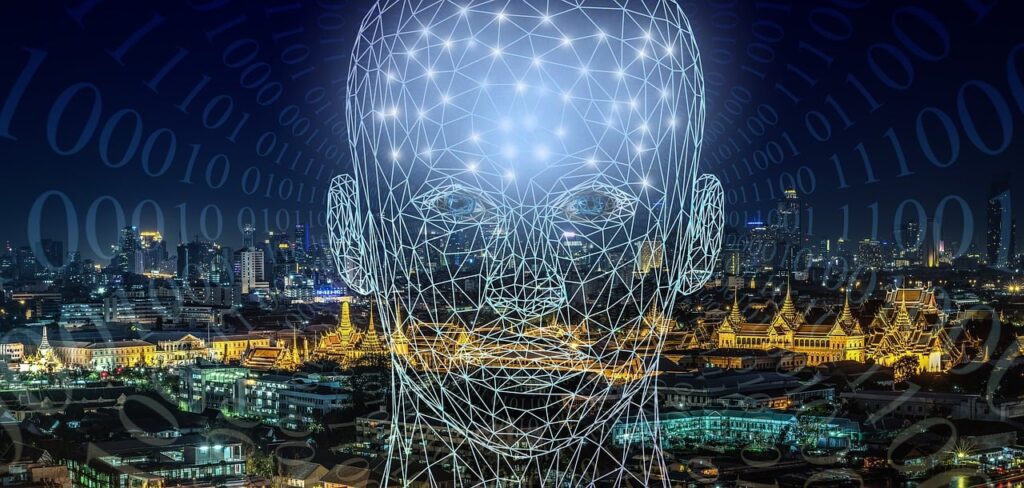In the fast-paced world of cybersecurity, Distributed Denial of Service (DDoS) attacks have long been a potent weapon in the arsenal of cybercriminals. These attacks flood websites and online services with an overwhelming volume of traffic, rendering them inaccessible to legitimate users. However, the emergence of artificial intelligence (AI) has taken DDoS attacks to a new level of danger. This article unravels the concept of AI-enhanced DDoS attacks, explores their potential threats, and emphasizes the critical importance of defending against these sophisticated assaults.

Understanding DDoS Attacks
Distributed Denial of Service attacks are a malicious attempt to disrupt the normal functioning of a network, service, or website by overwhelming it with a flood of internet traffic. This surge in traffic can come from a network of compromised computers, often referred to as a botnet. DDoS attacks aim to saturate the target’s available bandwidth, processing power, or memory, rendering the service or website inaccessible to legitimate users.
There are various types of DDoS attacks, including:
-
Volumetric Attacks: These attacks flood the target with a high volume of traffic to consume its bandwidth.
-
Protocol Attacks: Protocol attacks exploit vulnerabilities in network protocols, causing network devices to consume resources.
-
Application Layer Attacks: These attacks focus on exploiting vulnerabilities in the application layer of a network, targeting web servers and applications.
-
Hybrid Attacks: Hybrid attacks combine elements of different DDoS attack types to maximize their effectiveness.
The Role of AI in DDoS Attacks
The application of AI in DDoS attacks is a game-changer. AI can be used to orchestrate and enhance various aspects of these attacks:
-
Attack Optimization: AI can adapt the attack strategy in real-time based on the target’s defenses, identifying the most vulnerable points.
-
Traffic Anomalies: AI can generate traffic patterns that mimic legitimate user behavior, making it more challenging to detect and mitigate the attack.
-
Sophisticated Botnets: AI can create and manage botnets with greater efficiency and stealth, increasing the scale of the attack.
-
Evasion Techniques: AI can employ evasion techniques to bypass security measures, including obfuscation and IP spoofing.
-
Self-Learning: AI-driven DDoS attacks can learn and evolve over time, becoming more effective with each attempt.
AI-Enhanced DDoS Attack Threats
AI-enhanced DDoS attacks pose significant threats:
-
Intensified Impact: AI allows attackers to launch more potent DDoS attacks, capable of causing extensive service disruption.
-
Enhanced Stealth: AI-driven attacks are harder to detect due to their ability to mimic legitimate traffic patterns.
-
Adaptive Tactics: Attackers can swiftly adjust their strategies to bypass evolving security measures.
-
Resource Efficiency: AI increases the efficiency of DDoS attacks, allowing cybercriminals to disrupt multiple targets simultaneously.
-
Service Downtime: Successful AI-enhanced DDoS attacks can lead to extended periods of service downtime, harming businesses and organizations.
Defending Against AI-Enhanced DDoS Attacks
To protect against the growing threat of AI-enhanced DDoS attacks, individuals and organizations must implement robust security measures and best practices:
-
DDoS Mitigation Services: Invest in DDoS mitigation services offered by specialized providers to filter malicious traffic and protect against large-scale attacks.
-
Firewalls and Intrusion Detection Systems: Implement firewalls and intrusion detection systems to block unauthorized access and detect unusual traffic patterns.
-
AI-Driven DDoS Defense: Utilize AI-driven solutions for real-time detection and mitigation of DDoS attacks.
-
Traffic Analysis: Continuously monitor network traffic for anomalies that may signify an attack.
-
Incident Response Plans: Develop and test incident response plans to minimize downtime in the event of a successful attack.
-
Bandwidth Scaling: Consider increasing available bandwidth to absorb traffic surges during an attack.
-
Rate Limiting: Implement rate limiting to control traffic flows and reduce the impact of DDoS attacks.
-
AI-Based Traffic Analysis: Use AI for advanced traffic analysis to detect subtle patterns and anomalies associated with DDoS attacks.
Challenges in Defending Against AI-Enhanced DDoS Attacks
Defending against AI-enhanced DDoS attacks presents several challenges:
-
Resource Intensity: AI-driven defense requires significant computational resources, which may not be available to all organizations.
-
Adaptive Attackers: Attackers can adapt their AI-enhanced tactics to evade AI-driven defenses, creating an ongoing challenge.
-
Resource Constraints: Smaller organizations and individuals may face constraints in terms of budget and expertise to implement robust defenses.
-
False Positives: AI-driven defense systems may produce false positives, leading to the blocking of legitimate traffic.
The Future of AI in DDoS Attacks and Defense
AI is expected to play an increasingly prominent role in DDoS attacks and defense in the future. Some potential developments to watch for include:
-
AI-Enhanced Mitigation: AI-driven DDoS mitigation will become more sophisticated, offering better protection against evolving threats.
-
AI-Enhanced Attack Tools: Attackers will continue to leverage AI to create more potent and stealthy DDoS attacks.
-
Regulatory Responses: Governments and regulatory bodies may develop guidelines and regulations to address AI-enhanced cyber threats.
-
Education and Awareness: The importance of education and awareness about DDoS attacks and AI-driven threats will continue to grow.
Conclusion
AI-enhanced DDoS attacks have introduced a new level of danger to the cybersecurity landscape. The integration of artificial intelligence in these attacks amplifies their impact and makes them more challenging to defend against. As technology continues to advance, so too do the threats it brings.
Staying informed about emerging threats, investing in AI-driven defense solutions, and implementing best practices are essential steps to protect against the growing menace of AI-enhanced DDoS attacks. With ongoing research, development, and collaboration among security experts, it is possible to maintain a strong defense against these evolving threats and ensure the resilience of online services and networks.